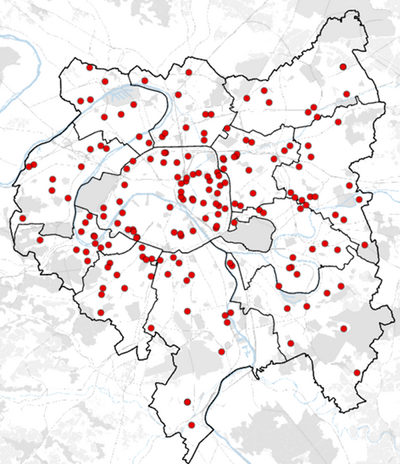Team presentation
The Nemesis team (an acronym for “Neighborhood Environments and Mobility: Effects on Social health InequalitieS”) was created in July 2015. The overall objective of the team is to investigate whether a range of environmental exposures incurred in urban contexts, either at home, in other visited places, in the outdoors, or during travels, in the context of climate change, have an impact on health.
More precisely, the three main objectives of the Nemesis team are (i) to examine how urban neighborhood environments influence health, (ii) to explore the impact of mobility and transport behavior on health, and (iii) to investigate the health impact of heat waves in cities and how it varies according to individual, building and dwelling, and environmental vulnerability factors.
We rely on two complementary methodologies to address these aims.
First, our investigations rely on the continuous monitoring of participants with sensors and smartphones, which allows us to take into account dynamics of exposure, behavior, and health across space and time using high frequency spatiotemporally referenced data. We analyze the data of the sensor-based studies conducted by the team: the MobiliSense study on transport and health; the HANC and MINDMAP studies on older adults in the city; and the H3Sensing study on heat waves, thermoregulation, and sleep.
Second, we explore the effects of weather and heat waves on the health of the general population and vulnerable subgroups, and how such influences vary according to the geographic context by using register-based data collected by the healthcare system (including the National System for Health Data). These studies include a project on patients with multiple sclerosis (CONFISEP), a project on patients with neurodegenerative diseases (Hwaves-Neuro), and analyses conducted in the general population (VF++).
Finally, the Nemesis team develops and provides to the community the Eco Emo tracker smartphone application. It allows researchers to collect data through mobile questionnaires according to various strategies, and on the daily mobility of study participants.







